Ireland’s flowers are a canvas of colour and culture, each with a unique tale. Across the country, a rainbow of wildflowers flourishes, showcasing a colourful diversity that brightens the Irish landscape. Step into a world where the shamrock isn’t just about luck, and wildflowers like the bog rosemary colour the untamed landscape. This guide unveils the top ten Irish flowers, unlocking their ecological importance and entwining you in their rich cultural backdrop—ready to blossom with every click. Discover the best flowers in Ireland, celebrated for their popularity, beauty, and cultural significance.
- The shamrock, central to Irish heritage and culture, is both ecologically important and a subject of botanical debate regarding its true identity.
- Ireland’s enchanting wildflowers, which include species like Primrose, Bog Rosemary, and Yellow Rattle, are not only aesthetically pleasing but also ecologically significant.
- Invasive species pose a real threat to Ireland’s biodiversity, highlighting the need for effective management to preserve native flora.
The Irish Shamrock: A Symbol of Luck and Heritage
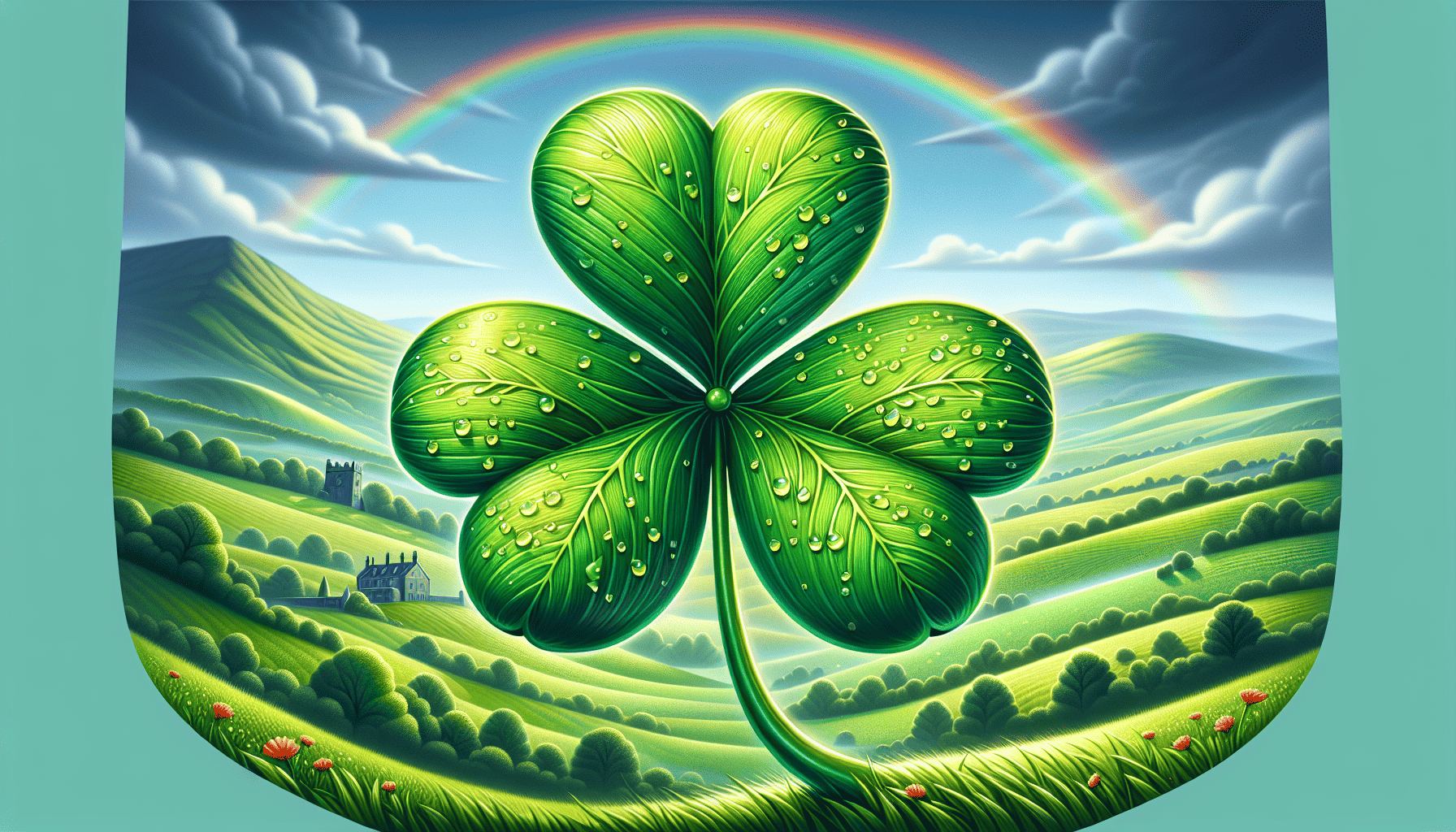
The shamrock holds a respected position as a symbol in Ireland. It is a small green plant with three to four heart-shaped leaflets. Known in the Irish language as ‘seamrog’, translating to ‘little or young clover’, it is the national plant of Ireland, linked with Saint Patrick, the country’s patron saint. St. Patrick famously used the shamrock to explain the concept of the Holy Trinity in Christian teachings, illustrating the Father, Son, and Holy Spirit as three parts of one entity. From the ancient Irish Druids who revered its trinity-shaped leaves to modern traditions where it’s honored on Saint Patrick’s Day, the shamrock has been an enduring symbol of luck and an integral part of Irish culture for centuries. Irish people continue to maintain and celebrate the shamrock as a cherished symbol of their heritage and identity.
The True Shamrock Plant
Notwithstanding the shamrock’s importance, its true identity remains a topic of debate. The main contenders in this botanical mystery are Trifolium dubium, known as the lesser clover, and Trifolium repens, the white clover. While some argue that the lesser clover is the ‘real’ commercial shamrock, others claim that a seaside variety holds the title of the ‘true’ shamrock. Other plants, such as Oxalis acetosella and black medick, are also sometimes considered as possible shamrock species.
Both these clover species belong to the subfamily Papilionoideae, acclaimed for their nitrogen-fixing ability that benefits both wildlife and soil health. These clover plants, particularly the lesser and white clover varieties, are valuable sources of nectar for bees, symbolizing the ecological role of the shamrock in nurturing Irish biodiversity. Red clover, another common species in Ireland, is recognized for its vibrant pinkish-purple flowers, its importance as a forage crop, and its contribution to the diversity of Irish flora.
Shamrock in Irish Culture and Traditions
Various Irish traditions and rituals prominently feature the shamrock. For instance, the tradition of ‘Drowning the Shamrock’ on Saint Patrick’s Day sees the shamrock used in a toast that concludes the day’s festivities, honoring the patron saint of Ireland. Moreover, in traditional Irish medicine, the shamrock has been used to alleviate joint inflammation, signifying its therapeutic uses.
In Irish folklore, the shamrock is surrounded by intriguing beliefs. For instance, it is thought that wild shamrock will not grow outside of Ireland, symbolizing its legendary bond with the Irish land. Furthermore, it plays an important ecological role, offering nectar for bees and flies, exemplifying its ecological role in Irish nature.
Enchanting Native Wildflowers of Ireland
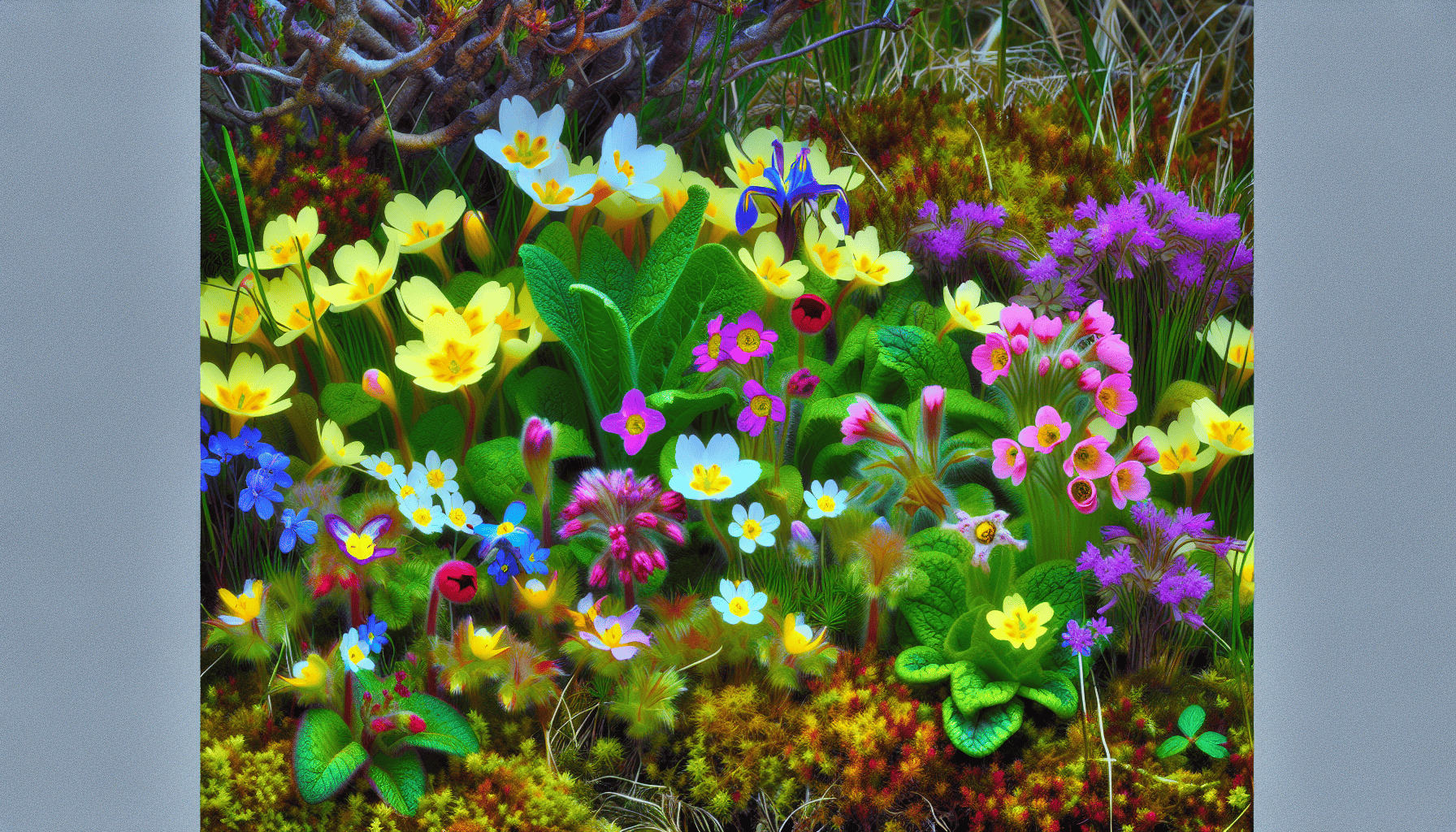
The stunning array of native wildflowers, including the national flower, are beautiful flowers that enhance the Irish landscape and mirror Ireland’s rich biodiversity as flowers bloom throughout the seasons. From the vibrant Primrose blooming in early spring to the Bog Rosemary thriving in Irish marshes, these flowers not only add color to the landscape but also play an integral role in supporting local ecosystems.
Join us in exploring the enchanting world of Irish wildflowers, including the national flower of Ireland, each with its unique characteristics and stories.
Primrose (Primula vulgaris)
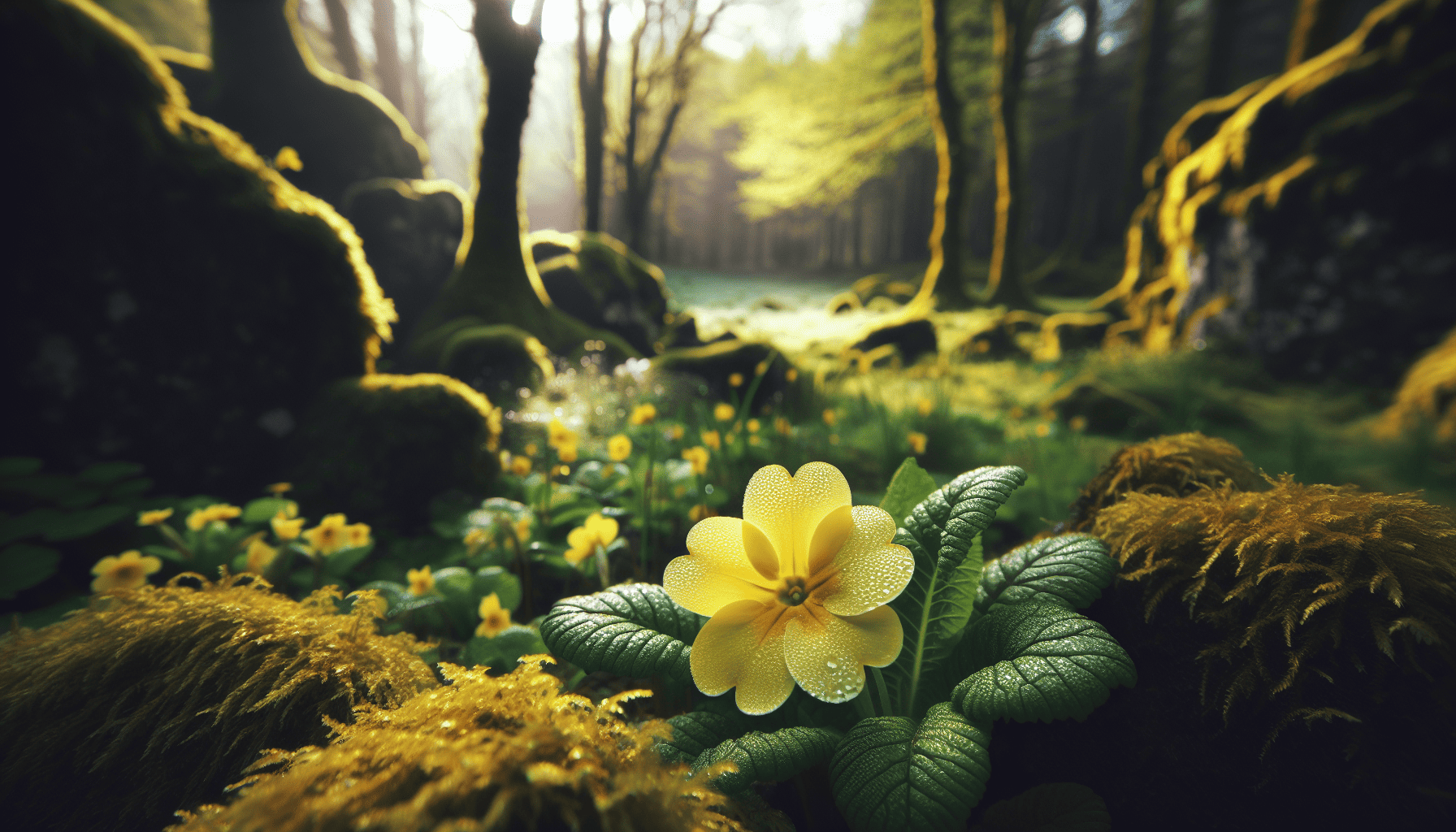
Primrose, known in Irish as ‘Sabhaircín’, is a perennial plant that paints Irish woodlands and gardens with its yellow blooms during early spring. Also commonly known as the English primrose, Primula vulgaris is native to western and southern Europe, including the British Isles, and is celebrated for its cultural significance as both a beloved garden flower and a plant with traditional medicinal uses. Its wrinkled leaves that form a rosette shape and its vibrant yellow flowers make it a sight to behold. The blooming period of Primrose in Ireland extends from March to May, and you can often find these cheerful flowers in wooded areas and along roadsides.
In Celtic culture, primroses, regarded as sacred, hold a special place. On the eve of May Day, primroses and other yellow flowers are traditionally placed on doorsteps and windowsills as a protection against supernatural forces. This tradition reflects the deep-rooted connection between Irish customs and floral elements, including pink flowers.
Bog Rosemary (Andromeda polifolia)
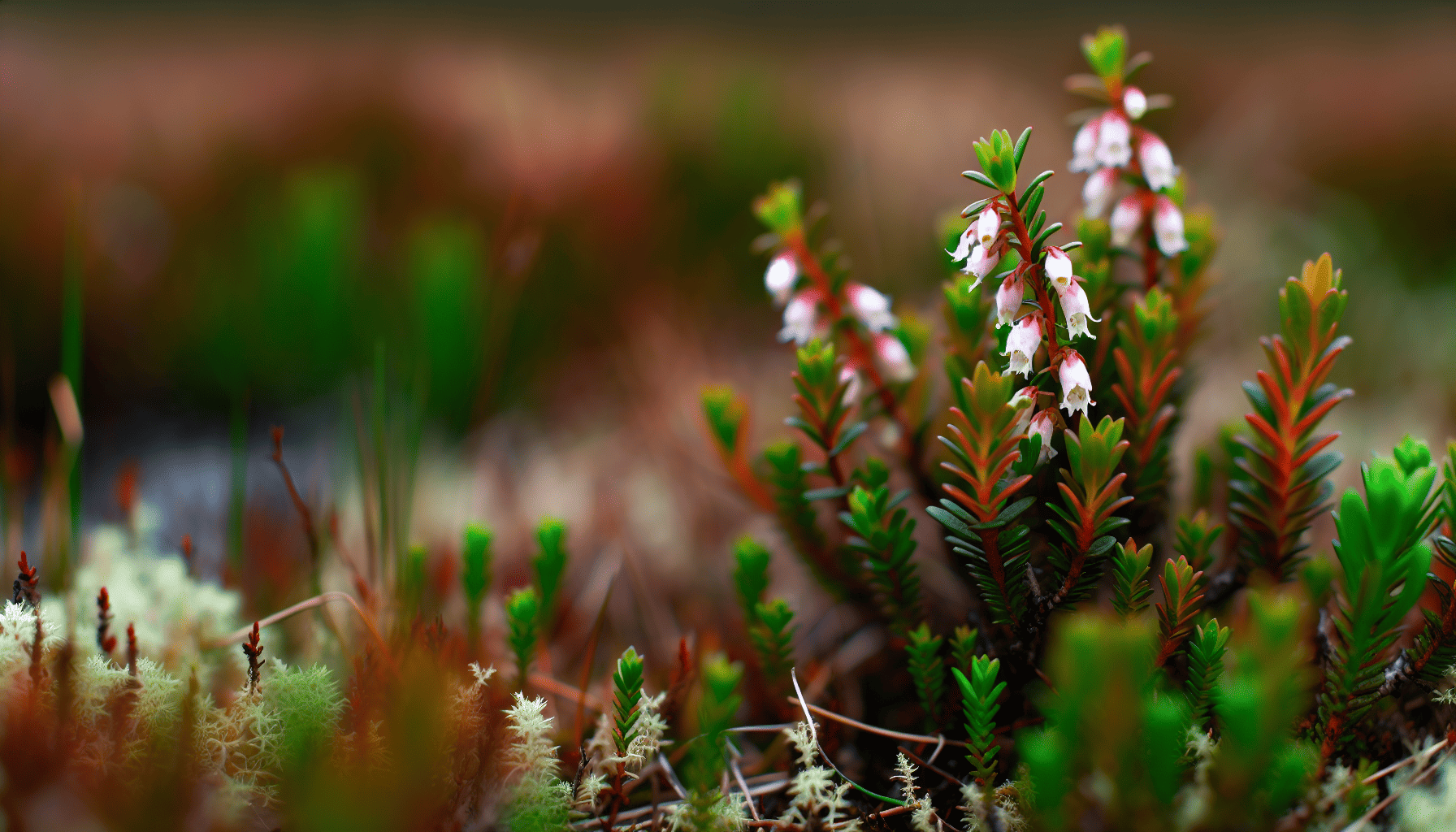
Bog Rosemary, scientifically known as Andromeda polifolia, is an eye-catching wildflower that thrives in the damp habitats of Irish bogs. It is characterized by bright pink or white flowers that appear in a curved umbel at the tip of the branches, typically blooming from May to June and ending its blooming season in September. However, despite its beauty, the Bog Rosemary plant is protected due to its declining numbers and loss of habitat from drainage and agricultural practices. It is also a poisonous plant that should not be ingested.
Known in Irish as Lus na móinte, Bog Rosemary reflects its significance and familiarity in local Irish culture. As you traverse the bogs of the Irish midlands, the sight of this vibrant wildflower is sure to leave you spellbound.
Spring Squill (Scilla verna)
Producing clusters of star-shaped flowers, Spring Squill, or Sciolla earraigh in Gaelic, is a small perennial flowering plant. Native to Europe, this stunning flower predominantly grows along Ireland’s eastern coast. Its blue, white, or pink star-shaped flowers with six petals are a delightful sight, and its blooming period from March to May signals the arrival of spring and carries symbolism of hope and new beginnings.
In recognition of its charm, Spring Squill has been chosen as the county flower for County Down since 2007. So, the next time you visit this part of Ireland in spring, be sure to look out for this microcosm of beauty growing in the wild.
Sea Aster (Tripolium pannonicum)
The Sea Aster, known in Irish as luibh bhléine, adds a splash of color to the Irish coastlines with its vibrant presence. It is especially prevalent along the Irish coastline, thriving in its natural habitat of salt marshes and estuaries, where its resilience supports local coastal ecosystems. Its flowers, reminiscent of a daisy and sometimes compared to the Easter Lily, have a yellow center and petals that range from pale lilacs to rich purples. The Sea Aster typically flowers from June through September, marking its bloom period on the coastal landscapes.
Apart from its visual appeal, this plant also plays an instrumental role in attracting butterfly species such as the red admiral, enhancing pollinator biodiversity.
Marsh Cinquefoil (Comarum palustre)
Recognized by its erect star-shaped maroon flowers that bloom from May to July in a loose terminal cluster, Marsh Cinquefoil, or Cnó léana in Irish, is a perennial wildflower. The plant’s leaves are pinnately divided into 3 or 5 coarsely toothed leaflets, often displaying a reddish tinge that contributes to its striking appearance. This wildflower thrives in wetland habitats and can be found in Irish marshes, bog lands, and along lake shores, enhancing the natural flora of these ecosystems.
During the flowering season, Marsh Cinquefoil is regularly visited by pollinators such as bees and butterflies, contributing to the local ecosystem. So while the Marsh Cinquefoil may not be the most common wildflower you’ll encounter on your Irish adventure, its presence is a testament to the rich biodiversity that the nurtures.
Cowslip (Primula veris)
As a vibrant yellow wildflower, Cowslip offers a springtime spectacle in Ireland. Characterized by a cluster of small drooping yellow flowers protruding from a stout stem, Cowslips typically bloom in April and May, signaling the arrival of spring. You can often find these cheerful flowers brightening up Irish roadsides and pastures.
Once threatened by over-picking and habitat changes, Cowslips are now protected under the Wildlife (NI) Order, 1985 in Northern Ireland. The good news is that these delightful flowers are beginning to make a comeback, reappearing and reestablishing their presence in Ireland’s lush landscapes.
Buttercup (Ranunculus acris)
Adding splashes of yellow to the Irish countryside from April through October, Buttercup is a lively wildflower. Its cheerful blooms include the native varieties: creeping buttercup, meadow buttercup, and bulbous buttercup. These radiant flowers, especially the meadow buttercups, flourish in a variety of locations, from uncut lawns to urban areas near walls, creating a landscape particularly resplendent in the golden light of noon or evening.
Buttercups are not only a feast for the eyes but also serve a crucial ecological role. The cup-shaped scales at the base of a buttercup’s petals harbor nectar, attracting a variety of insects including beetles, butterflies, and ladybirds for pollination.
So next time you spot a buttercup, remember it’s more than just a pretty face; it’s a small but significant player in Ireland’s rich biodiversity.
Wild Iris (Iris setosa)
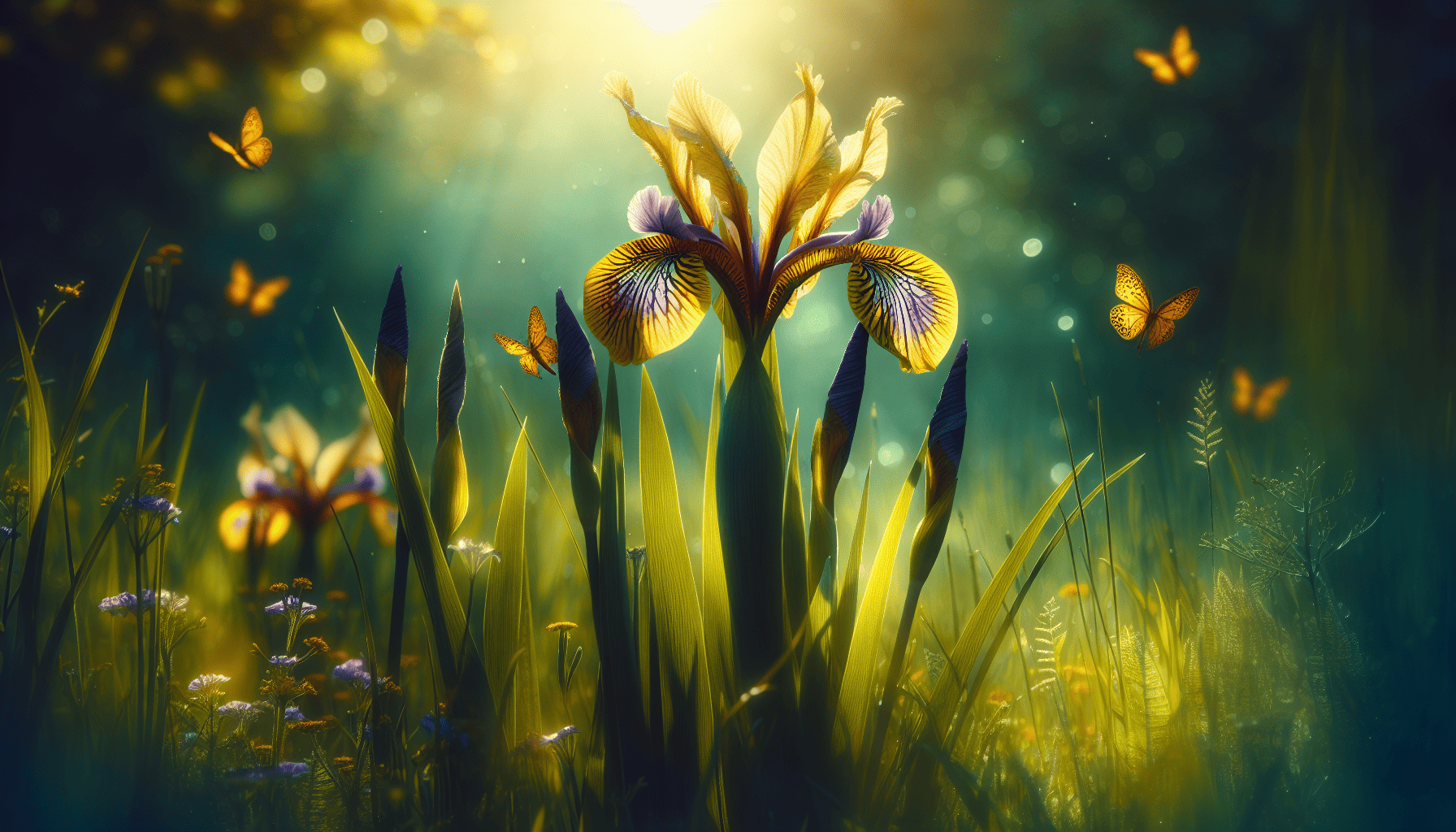
As a symbol of beauty and good fortune in Irish mythology, the Wild Iris offers a breathtaking sight. Its features include:
- Yellow flowers with distinctive purple veins
- Tall, ribbed, sword-shaped leaves that originate at the base of the plant
- Large, three-segmented seedpods filled with numerous seeds
These characteristics add to its striking appearance, especially the bright yellow center.
So if you’re lucky enough to spot a Wild Iris on your Irish adventure, take a moment to appreciate its unique beauty and the mythology that surrounds it.
Wood Anemone (Anemone nemorosa)
Blooming across Irish woodlands during the spring, Wood Anemone, also known as Windflower, is a fragile wildflower. It’s a sight to behold as the delicate petals unfurl to reveal the flower’s full beauty. However, while these flowers may appear delicate, they possess toxic compounds, and their sap can cause skin irritation to humans upon contact.
Despite this, the Wood Anemone is a beloved fixture of Irish woodlands, its delicate beauty a testament to the diverse and enchanting world of Irish wildflowers.
Yellow Rattle (Rhinanthus minor)
Known scientifically as Rhinanthus minor, Yellow Rattle is a remarkable wildflower playing a key role in supporting Irish grasslands’ biodiversity. This semiparasitic plant attaches to the roots of grasses, weakening the grass and allowing diverse plant species to emerge and thrive. Known as the ‘Meadow Maker’, Yellow Rattle facilitates the growth of various wildflower species by limiting grass dominance within meadows.
This unique ecological role emphasizes the importance of native wildflowers like Yellow Rattle in maintaining the balance and diversity of Ireland’s natural habitats.
Invasive Species Threatening Ireland’s Native Flora
Despite the incredible diversity and beauty of Ireland’s native flora, it faces threats from invasive plant species. Invasive species such as Rhododendron ponticum, Giant Hogweed, and Japanese Knotweed are altering habitats and outcompeting local vegetation, posing a significant threat to the survival and health of native Irish flowers.
Each invasive species poses a unique set of challenges. For instance:
- Rhododendron ponticum forms dense canopies that suppress the growth of native oak woodland plants
- Giant Hogweed spreads rapidly along river banks, impacting native plant communities
- Some invasive species like Giant Hogweed present public health risks due to their toxic sap.
Effective management and control of these species are critical to safeguarding Ireland’s indigenous plant life and maintaining the health of its ecosystems.
Celebrating Irish Flowers in Festivals and Traditions
More than just a visual delight, flowers form an integral part of the cultural tapestry in Ireland. A prime example is the Rose of Tralee International Festival, held annually in Kerry. This prominent Irish cultural event intertwines floral symbolism with Irish heritage, using roses to symbolically represent the women participating. Flowers are also used to symbolize peace and unity during Irish festivals and religious events, conveying messages of harmony and remembrance. This connection between flowers and Irish culture emphasizes the deep-rooted association of floral elements with Irish traditions.
The celebration of May Day, part of the ancient festival of Bealtaine, provides another vibrant illustration of this connection. This festival is celebrated with flowers, symbolizing the welcoming of summer through vibrant traditions and dances. Flowers are often chosen for special occasions and anniversaries, serving as meaningful gifts that highlight their symbolic significance for these events. From decorating the May Bush with streamers to spreading flowers at thresholds for protection, these customs underscore the deep-rooted connection between Irish customs and floral elements.
Floral Inspiration: Incorporating Irish Flowers into Your Garden or Bouquet
If Irish flowers’ beauty inspires you, consider incorporating them into your garden or bouquet. To begin, choose a sunny site with a soil that retains moisture but drains well for your wildflower garden. Prepare the site thoroughly by clearing weeds and lightly forking over the soil. Good garden centers and seed suppliers offer a range of annual flowering meadow seed mixes, which can incorporate native Irish wildflowers.
Irish flowers make thoughtful gifts for birthdays, anniversaries, and other special occasions. You can easily order flowers online for delivery, choosing from a wide selection of bouquets crafted by expert florists. Many services allow you to add chocolates or other extras to your order, making your gift even more special. New customers can often enjoy a discount or special offer on their first order, making it a great time to send a beautiful floral arrangement.
The best time to sow wildflower mixes is between now and early June, when soil moisture levels, temperatures, and light levels are sufficient to ensure good germination. Here are some steps to follow:
- Calculate the amount of seed mix needed based on the area size.
- Sow at the recommended spacing to avoid a patchy meadow.
- After sowing, ensure good contact between the seed and damp soil by rolling or pressing the area.
- Water before and after sowing, as well as during dry spells.
- Gentle hand-weeding will help maintain the wildflower meadow and allow the native Irish species to flourish.
Irish flowers can not only enhance your garden but also lend an elegant touch to your flower arrangements. Bells of Ireland, for instance, can be used to create stunning arrangements with their bell shaped flowers. Allow the line and form of the flowers to dictate the style of the bouquet, as they can beautifully dance in the arrangement. You can enhance the longevity of Bells of Ireland in floral arrangements by using a professional flower food and a floral spray. Easter lilies, too, can be elegantly paired with roses, peonies, and irises in bouquets to celebrate their cultural significance. For spring bouquets, consider including tulips and daffodils, which are popular choices that add vibrant color and texture to arrangements. Unique native flowers like jasione montana, with its clusters of blue flowers, and Irish Eyebright, known for its delicate summer blooms, can also be incorporated for a distinctive Irish touch.
When creating bouquets, you can rely on a local florist or a network of florists to ensure quality and freshness. Local florists provide a personal touch, expert craftsmanship, and can deliver flowers with same day delivery or next day delivery options. Their reliable flower delivery service covers all of Ireland, ensuring your flowers arrive fresh and on time. Florists also offer excellent customer service, assisting you with any questions and helping you customize your order for any occasion. Sympathy flowers are available to express condolences and provide comfort during difficult times, and you can add chocolates to your flower order for an extra thoughtful gesture.
In this journey through the floral landscapes of Ireland, we’ve explored the mystery of the true shamrock, admired the diverse array of enchanting native wildflowers, and delved into the significant role these flowers play in Irish festivals and traditions. We’ve also highlighted the threats that invasive species pose to Ireland’s native flora and shared practical tips on how you can incorporate these enchanting flowers into your garden or bouquet.
As we reach the end of our journey, we hope you’ve come to appreciate the rich biodiversity and cultural significance of Irish flowers. Whether it’s the iconic shamrock, the vibrant Primrose, or the fragile Wood Anemone, each flower is a significant part of Ireland’s natural and cultural heritage. So, the next time you’re in Ireland, take a moment to admire these floral wonders and their captivating stories. And who knows? You might just be inspired to bring a touch of Ireland’s floral magic into your own garden or bouquet!
What is a traditional Irish flower?
The traditional Irish flower is the shamrock, which has a longstanding association with Ireland and is omnipresent in popular culture. It’s most commonly seen as a symbol of St. Patrick’s Day.
What is the Celtic flower?
The Celtic flower is the Shamrock, a small, three-leafed clover with powerful symbolic significance to the Celts, revered for its association with the number three. It has a longstanding association with Ireland and is omnipresent in popular culture as a symbol of St. Patrick’s Day.
What is the true shamrock plant?
The true shamrock plant is a subject of ongoing scientific debate, with Trifolium dubium (lesser clover) and Trifolium repens (white clover) being the main contenders.
Where can I see native wildflowers in Ireland?
You can see native wildflowers in Ireland in counties like Cork, Wexford, and in the unique Burren region, as well as in marshes, bogs, and grasslands throughout the country. Enjoy the diverse and beautiful wildflowers on your visit to Ireland!
Are there any invasive species threatening Ireland’s native flora?
Yes, invasive species such as Rhododendron ponticum, Giant Hogweed, and Japanese Knotweed are indeed putting Ireland’s native flora at risk by disrupting habitats and outcompeting local plants. These invasive plants pose a significant threat to the country’s natural biodiversity.
Caring for Irish Flowers: Tips for Home and Garden
Bringing the magic of native Irish flowers into your home or garden is a wonderful way to celebrate the natural beauty of Ireland and Northern Ireland. Whether you’re tending to a wildflower patch in your garden or enjoying a bouquet of Northern Ireland flowers delivered to your door, a little care goes a long way in keeping these blooms vibrant and healthy.
For the Garden:Native Irish flowers, such as primrose, wood sorrel, and true shamrock, thrive best when planted in well-drained soil with plenty of organic matter. Most Irish flowers prefer a spot that gets morning sun and dappled afternoon shade, mimicking the gentle light of the Irish countryside. Regular watering is key, especially during dry spells, but be careful not to overwater—many native species are adapted to the moist yet free-draining soils found across Ireland. Mulching around your plants helps retain moisture and keeps weeds at bay, allowing your garden to flourish with the freshest flowers throughout the growing season.
For Cut Flowers and Bouquets:If you love to send flowers or receive beautiful Irish flowers as a gift, keeping them fresh is simple with a few expert tips. Trim the stems at an angle before placing them in clean water, and change the water every couple of days to prevent bacteria build-up. Remove any leaves that fall below the waterline to keep your bouquet looking its best. For longer-lasting blooms, keep your arrangement out of direct sunlight and away from heat sources. These steps will help your flowers arrive and remain as stunning as the day they were picked, whether you’re in Ireland, Northern Ireland, or sending a touch of the Emerald Isle to loved ones abroad.
Seasonal Care:Irish flowers bloom in harmony with the changing seasons. In early spring, keep an eye out for frost and protect tender new shoots with a light covering if needed. During the summer months, regular deadheading encourages more blooms and keeps your garden looking its best. As autumn approaches, allow some flowers to go to seed—this not only supports local wildlife but also ensures a new generation of native Irish flowers for the following year.
With a little attention and care, you can enjoy the timeless beauty of Irish flowers in your home or garden, keeping the spirit of the Emerald Isle alive all year round. Whether you’re nurturing a wildflower meadow or arranging a bouquet of Northern Ireland flowers, these tips will help your blooms thrive and bring a touch of Ireland’s natural charm to any setting.

